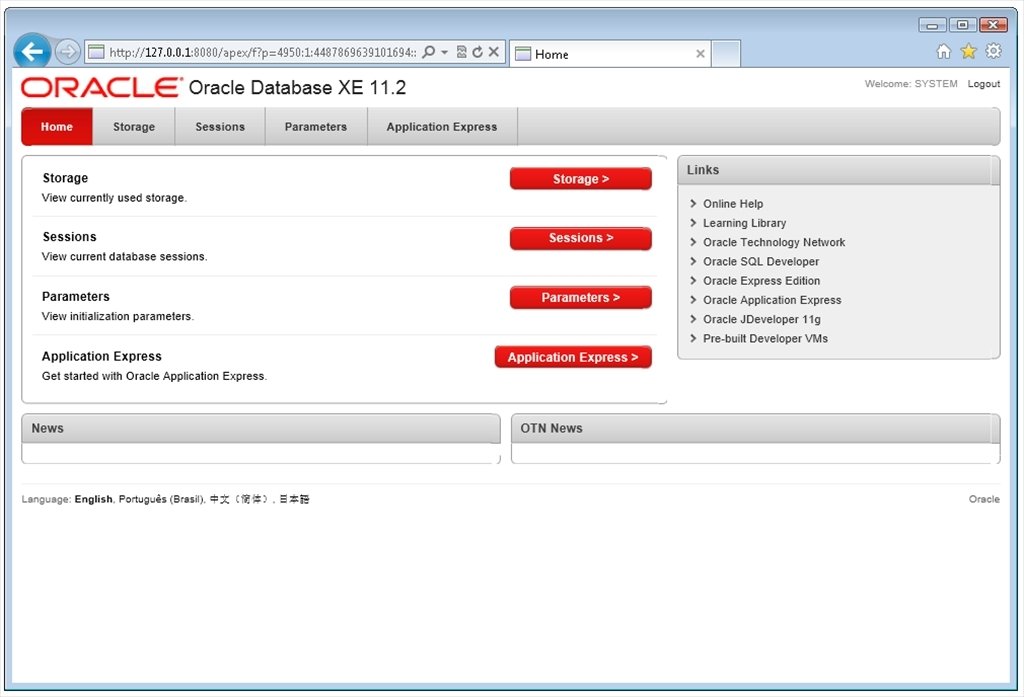Currently Oracle does not support MacOSX. They did for Tiger but dropped support plans for Apple when they bought SUN Microsystems. If you are willing to install an older version of MacOSX you can install Oracle 10.1.0.5 (fully featured) or 10.2.0.4 (incomplete). For now: forget it. What you can do is run 11g. You are welcome to share any suggestions or improvements for this Oracle 11g(1Z0-052) Exam Free App. Also,if any of the content needs to be updated, please feel free to email at info@schoolinmobile.com Good luck for learning your Oracle Database 11g Administrator I (1Z0-052) training. Step 2 - Install Oracle Express. To install Oracle Express from the downloaded file, go to the location where you've downloaded it. Extract the file to a location of your choice. The process for doing this will depend on what acrhive program you use (7zip, WinZip, WinRAR), but generally you start by openning the ZIP file. Oracle Database 11g Release 2 Express Edition for Windows 64; Oracle Database 11g Release 2 Express Edition for Linux x86 and Windows; Previous Database Release Software. Oracle Database Enterprise Edition 10.2, 11.x, 12.x, and 18c are no longer available for download. The software is available as a media or FTP request for those customers who.
These steps will show you how you can download and install Oracle Express on your own computer, which is a smaller version of Oracle's database.
9 Steps total
Step 1: Visit the Oracle website and navigate to the Downloads page
Oracle Database Express Edition 11g Release 2 For Mac
You can start by going to the Oracle website (www.oracle.com) and going to the Downloads link at the top of the page.
Step 2: Select the Latest Version of Oracle
Select the Oracle Database 11g Express Edition. Once you have done that, you will need to read and accept a license agreement on the page.
Step 3: Choose the Right Version For Your Operating System
Oracle Express comes in many versions for different operating system. Choose the version you wish to use (either Windows or Linux).
At the time of writing, the only way to run Oracle Express on a Mac is to use a virtual machine.
Oracle 11g Express Edition For Mac
Step 4: Save the downloaded file
The Oracle website should let you download the file now. If it asks for an Oracle account, you can enter your details (if you have them), or you can skip it.
Step 5: Open and Extract the Files
Open and extract the file you've downloaded. There should be a setup.exe file in there, which you should run.
Step 6: Proceed With The Installation
The installer will ask you to press Next on the Welcome screen, and then to read and accept the terms and conditions.
Step 7: Choose and Installation Directory
The installer will also ask you to choose an installation directory. The default location is fine, but you can change it if you needed.
Step 8: Enter a Password - and Remember It
You'll be asked to enter a password to use for the SYS and SYSTEM accounts. These are the root accounts, and you'll need to login as these accounts for the first time, to then create other accounts.
Make sure you remember this password.
Step 9: Install
Read the summary and click Install. Oracle will then install the database on your computer, and once it has completed, it should be ready to use.
Oracle Express is usually a pretty straight-forward database to install. The main things to remember are to select the right version for your operating system, and to remember the SYS password you entered.
You can then use SQL Developer to access your database.
References
- Oracle Download Page
- Video instructions
0 Comments

Recently I tried to install Oracle XE into a docker container on Mac OS Sierra using the official docker file from Oracle. I had no luck, because the installation failed with this error message:
This system does not meet the minimum requirements for swap space. Based on the amount of physical memory available on the system, Oracle Database 11g Express Edition requires 2048 MB of swap space. This system has 0 MB of swap space. Configure more swap space on the system and retry the installation.
The problem is, that you can't do anything for this on a Mac - the system manages the swap files by itself and if you need for an example 64 GB you will get it. My new standard MacBook has 8 GB RAM and there is currently no reason for a swap file.
So, what can we do? After a short search I found this blog post, which describes how to alter the pre-installation script of the RPM installation file with the help of the repmrebuild command. Unfortunately this command is not available on Mac OS. I found only rpmbuild as part of the rpm installation with Homebrew.
Luckily I found another way to modify a rpm package under Mac OS: There is a Ruby based tool to build packages for multiple platforms called fpm. So, lets start:
If you don't have Homebrew on your Mac, install this first:
Install rpm:
Install tar:
Install fpm:
Unzip the downloaded Linux XE installation archive and go into the directory Disk1:
Write rpm scripts to text file:
Find this loop (from line 197 until line 212 as of this writing) and comment out or delete it:
Find this line (starting on line 328 as of this writing) and delete the line and everything behind until the file end:
Delete the very first line containing this code:
Save the file and bring it back into the rpm with this command (will take some time):
Go out of Disk1 and update the zip archive, because the Oracle provided build script needs it compressed (will take some time):
When you now do the Docker build you will face another error message:
package oracle-xe-11.2.0-1.0.x86_64 is intended for a different operating system
To fix this is fairly easy. Open the Dockerfile.xe, go to line 61 (as of this writing) and change this code:
to this one:
When you now start the docker build you should be successful (will take some time):
The last step is to run the container - on the first startup the database is created (will take some time, align the name to your needs):
If you plan to use APEX without any dedicated webserver (maybe because you are the only user and it is only a small dev instance) you should pimp the EPG a little bit:
I use currently a Node.js based proxy server running directly on my Mac OS, because I need a webserver there anyway. The nice thing is, that the EPG don't need to serve the images and I also don't need to install the images into the EPG, when I upgrade to a newer APEX version. This saves me time and the EPG runs faster because of less number of requests. I will cover this topic in the next post.
Happy installing :-)
Ottmar
